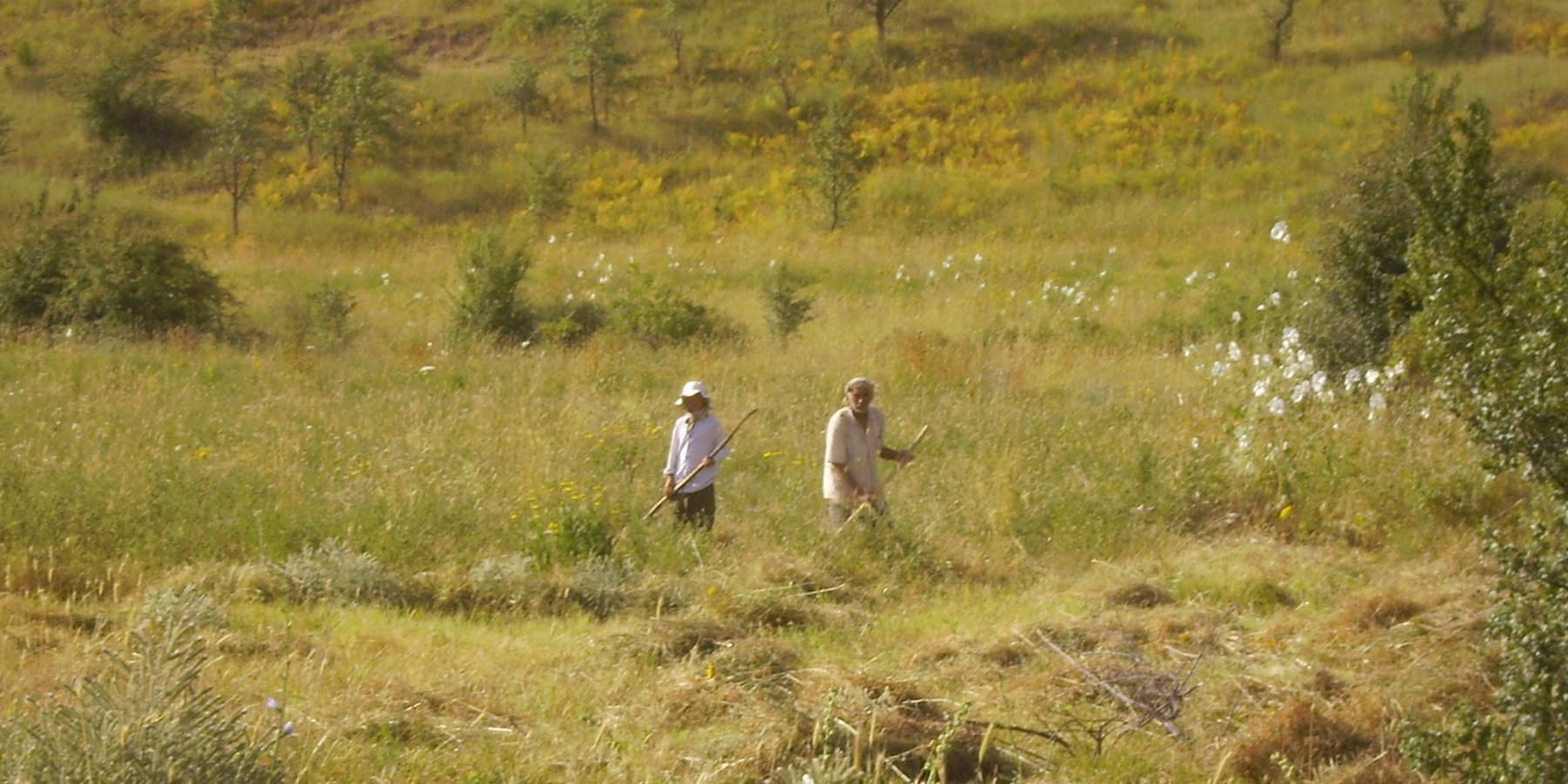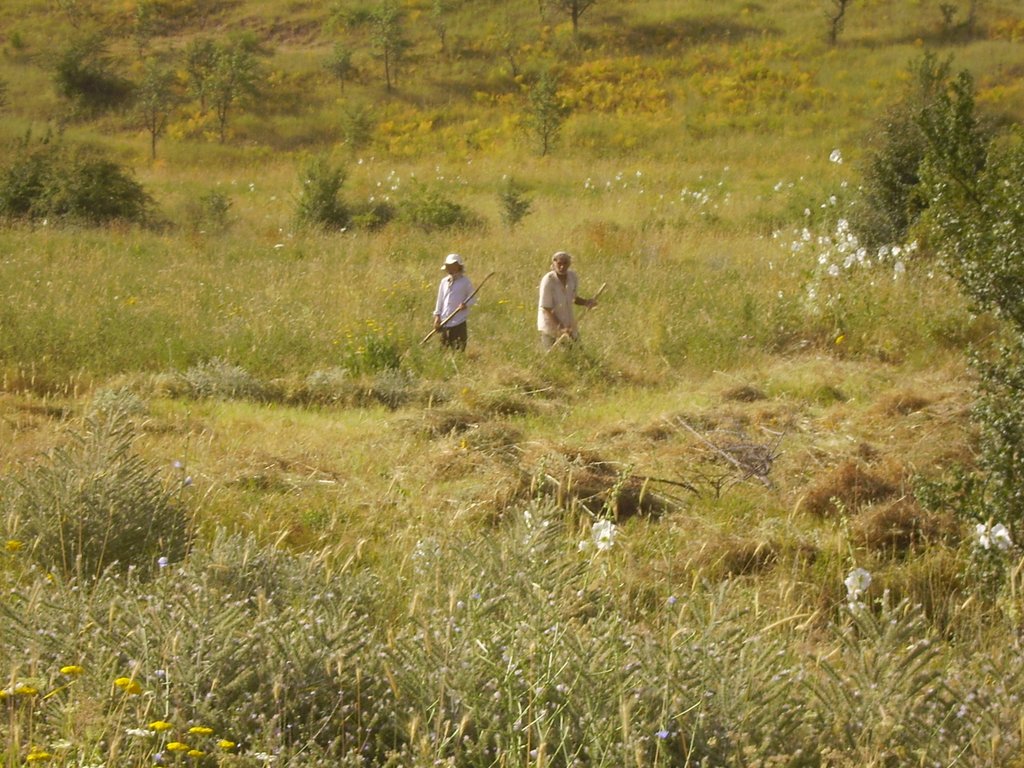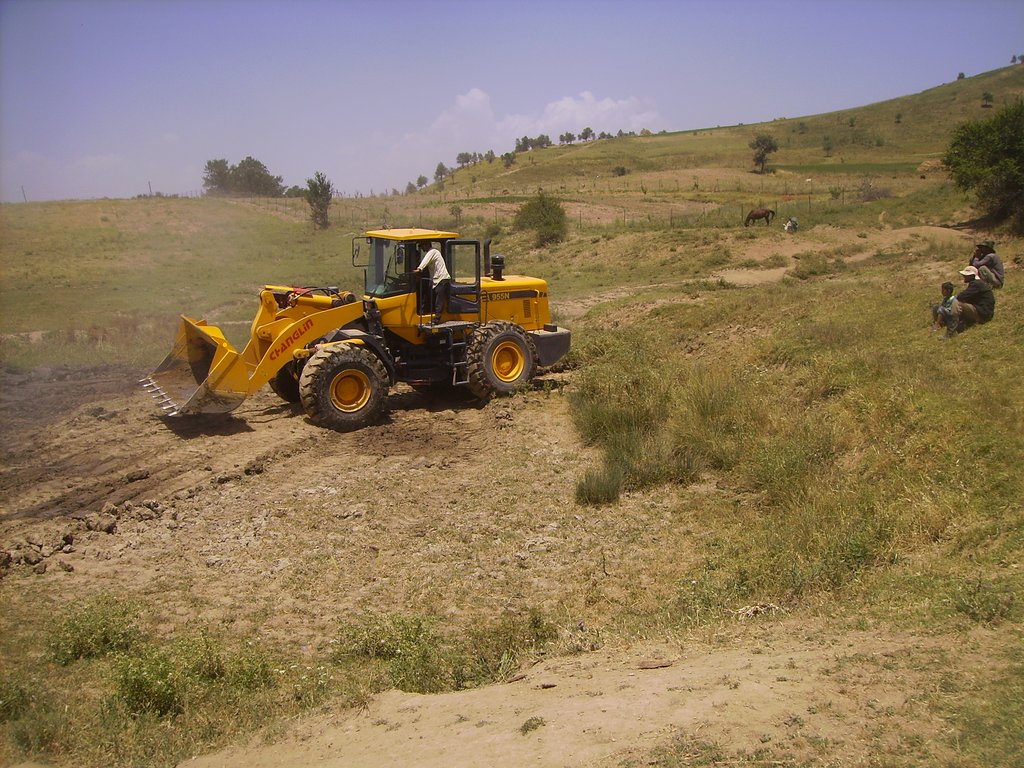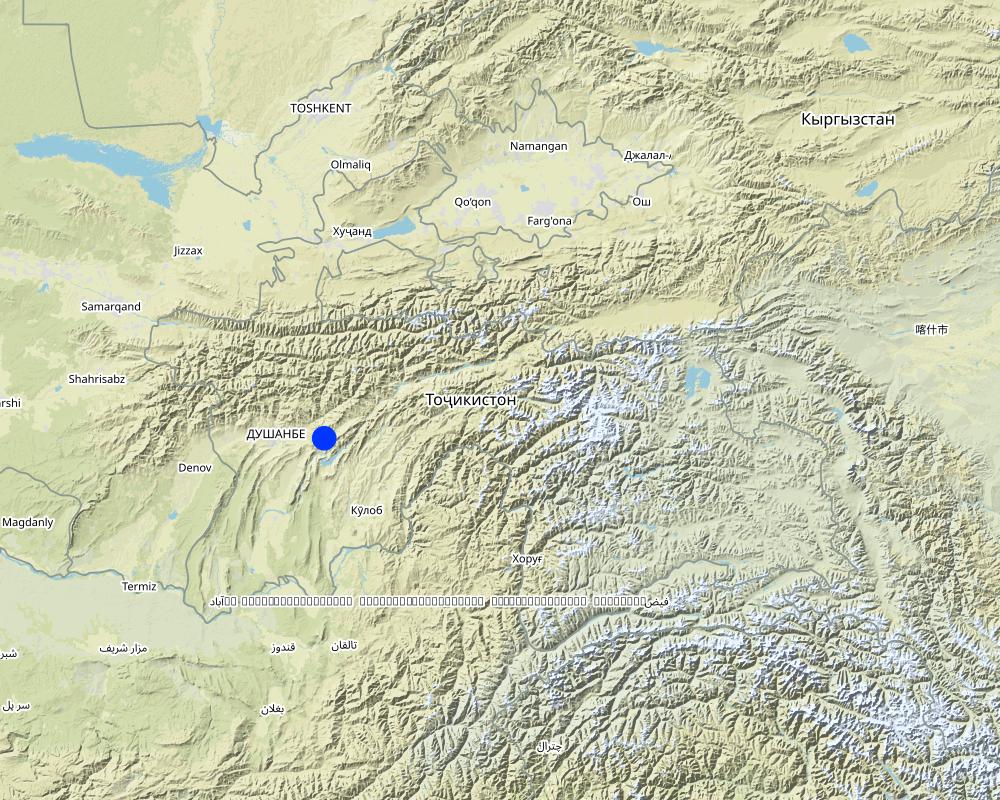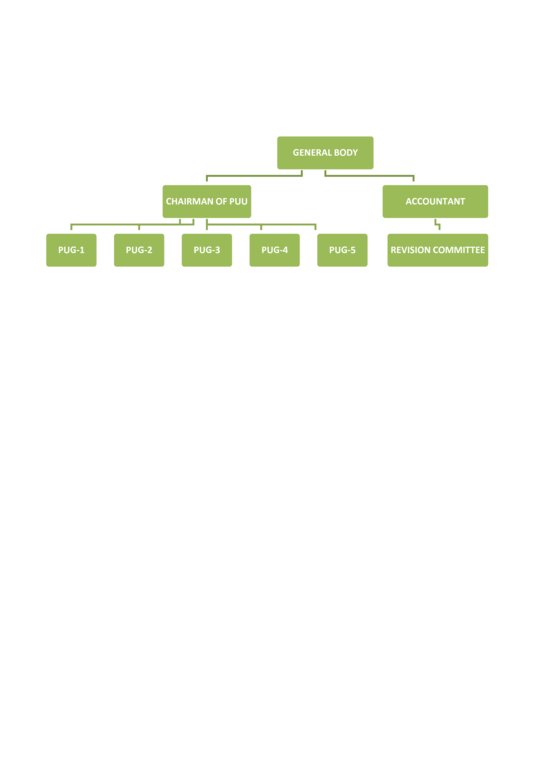Sustainable livestock and pasture management [Tajikistan]
- Creation:
- Update:
- Compiler: Kamolidin Abdulloev
- Editor: –
- Reviewers: Farrukh Nazarmavloev, William Critchley, Rima Mekdaschi Studer
Pasture Users Unions
approaches_3713 - Tajikistan
View sections
Expand all Collapse all1. General information
1.2 Contact details of resource persons and institutions involved in the assessment and documentation of the Approach
Name of project which facilitated the documentation/ evaluation of the Approach (if relevant)
Environmental Land Management and Rural Livelihood ProjectName of the institution(s) which facilitated the documentation/ evaluation of the Approach (if relevant)
Committee for Environment Protection of Tajikistan (Committee for Environment Protection of Tajikistan) - Tajikistan1.3 Conditions regarding the use of data documented through WOCAT
When were the data compiled (in the field)?
02/04/2018
The compiler and key resource person(s) accept the conditions regarding the use of data documented through WOCAT:
Yes
1.4 Reference(s) to Questionnaire(s) on SLM Technologies
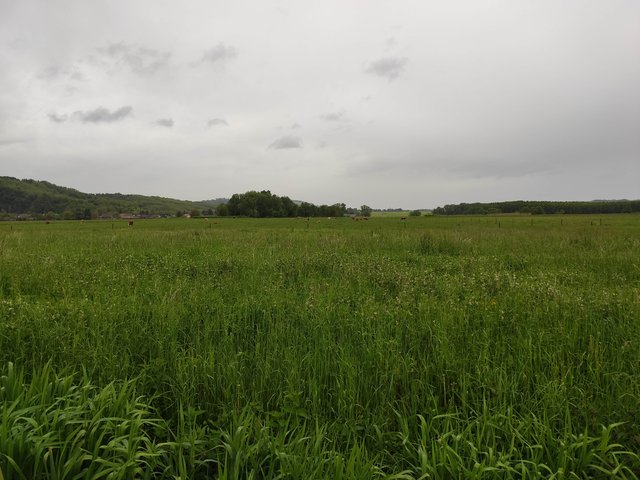
Meadows and pastures [Hungary]
Permanent meadows or pastures are more effective in controlling land degradation than arable cropping. They are especially appropriate in hilly regions on sloping land where the risk of water erosion is high.
- Compiler: Brigitta Szabó
2. Description of the SLM Approach
2.1 Short description of the Approach
Sustainable livestock and pasture management is implemented through creating Pasture Users Unions (PUU) which design and implement pasture and livestock management plans.
2.2 Detailed description of the Approach
Detailed description of the Approach:
The Government of Tajikistan is implementing a project, funded by the Pilot Program for Climate Resilience (PPCR) and the Global Environment Facility (GEF), with the objective of enabling rural people to build up their productive assets in ways that sustainably improve natural resource management, and build resilience to climate change in selected climate-vulnerable sites. Livestock are an integral part of the agriculture sector, although there has been a shift to more extensive livestock grazing from the intensive livestock farming system practiced before independence. Today, more than 90% of livestock are held in household farms, indicating the importance of livestock to rural livelihoods, and the system is based primarily on grazing, supplemented by limited cultivated fodder crops and minimal use of concentrates.
Pastures comprise about 35% of Tajikistan’s total land area and 80% of its agricultural land - however substantial degradation is taking place. Pasture degradation may be exacerbated by climate change, which is likely to increase variability in water availability and temperature, and may result in local droughts and floods. Properly managed pasture helps control water flows in ways which contribute to mitigating floods and droughts, maintaining soil conservation and fertility, and providing habitats for wild plants and animals. The aim of the activity is to introduce sustainable community-managed pasture/fodder-based livestock production systems in villages in the Faizobod district of jamoat Dustmurod Aliev, situated in the mid-hills of Tajikistan. Approximate membership of the Pasture Users Unions (PUU) is between 50 and 200 households per village depending on size, with between 6 and 10 villages per jamoat. Comprehensive pasture and fodder assessments and evaluation of the feed/fodder balances are carried out, followed by the development of Pasture and Livestock Management Plans (PLMP) for various interventions including; improvement of pasture productivity through rotational grazing, protecting areas for regeneration, pasture rehabilitation, improving access to remote pastures, and supplementary fodder production; animal health requirements and breed improvement measures; infrastructure to access and use remote pastures, such as spot road improvements, and stock watering points. By virtue of the fact that users will welcome this approach in their jamoats, they will be able to manage the broad issues of pasture degradation, animal health and fodder production. Above all it will help farmers to control the balance between livestock and fodder.
2.3 Photos of the Approach
General remarks regarding photos:
Photos shows how the Pasture User Union maintains infrastructure in the pastures, giving them the opportunity to collect enough fodder for the winter time and keeping access open to the most distant pasture lands
2.4 Videos of the Approach
2.5 Country/ region/ locations where the Approach has been applied
Country:
Tajikistan
Region/ State/ Province:
Faizobod district
Further specification of location:
Jamoat Dustmurod Aliev
Map
×2.6 Dates of initiation and termination of the Approach
Indicate year of initiation:
2017
If precise year is not known, indicate approximate date when the Approach was initiated:
less than 10 years ago (recently)
Comments:
The project created 8 PUUs (4 in 2015 and 4 in 2016), and facilitated them to prepare Pasture and Livestock Management Plans. Institutions finished the project financed activities but they still continue their work
2.7 Type of Approach
- project/ programme based
2.8 Main aims/ objectives of the Approach
To help mitigate the effects of climate change on the rural population and slow pasture degradation processes through introducing and demonstrating sustainable pasture/fodder-based livestock production systems;
To support the development of a Pasture and Livestock Management Plan (PLMP) for Pasture User Unions (PUU), in a participatory, inclusive and gender sensitive way: to
- Serve as tool to organize the management of community managed pastures in such a way that it will
increase pasture yields in quantity and quality, without causing land degradation & erosion;
- Serve as a tool to improve livestock management, and;
- Bring the number of livestock in balance with the available fodder;
- Increase animal off-take through better yielding pastures, adoption of improved
feeding practices & improved animal management and through better animal health;
- Increase the income of the rural population from livestock keeping, and;
- Reduce downstream flood risk in mountain areas, due to improved land management.
2.9 Conditions enabling or hindering implementation of the Technology/ Technologies applied under the Approach
social/ cultural/ religious norms and values
- enabling
The land users are livestock keepers thus all the approaches are welcome as it will directly affect them
- hindering
Pasture User Unions do not have their own certificated lands under their control
availability/ access to financial resources and services
- enabling
As the Pasture Users Unions are equipped with the agriculture tractors and excavators, they process the lands and rehabilitate pasture roads and also bank stabilization works and from all of these activities earn money. The other sources is their membership fees that collect every month from the members.
institutional setting
- enabling
A Pasture Law was passed on 19 March 2013 (Law No 951) that will enable the formation of Pasture User Unions for the joint use and management of pasture resources.
collaboration/ coordination of actors
- enabling
The Pasture User Unions collaborate with the local district hukumat and all its departments, non-governmental and donor organisations in the process of implementation of Pasture and Livestock Management Plans. PUU also have very good cooperation with the land users and livestock keepers.
legal framework (land tenure, land and water use rights)
- enabling
Pasture User Union of "Sorkho" is established in Faizobod district, registered at jamoat level, and has their charter, stamp and other office equipment and an office.
policies
- enabling
Pasture laws are passed that supports pasture managament activities.
land governance (decision-making, implementation and enforcement)
- hindering
The main issue that is PUUs haven't ownership of the pasture land.
knowledge about SLM, access to technical support
- enabling
The project also includes training and technical support of the PUUs on budgeting, SLM approaches, and administration
markets (to purchase inputs, sell products) and prices
- enabling
Materials are broadly available at an affordable price
workload, availability of manpower
- enabling
Local people understand the importance of the activity and are ready to contribute cash and power for its implementation.
3. Participation and roles of stakeholders involved
3.1 Stakeholders involved in the Approach and their roles
- community-based organizations
The head of each PUU has been involved in the process of preparation
The Pasture User Union of "Sorkho" that was established by the project ELMARL. Support with the photos and information
- SLM specialists/ agricultural advisers
- NGO
Mountain Societies Development Support Programme (MSDSP)
They was partner organisation that did facilitation during the establishment and implementing Pasture User Unions plans
3.2 Involvement of local land users/ local communities in the different phases of the Approach
| Involvement of local land users/ local communities | Specify who was involved and describe activities | |
|---|---|---|
| initiation/ motivation | interactive | Awareness raising and introductory meetings, training, seminars and other with the local livestock keepers |
| planning | interactive | Local land users participated in the process of the preparation of plan (PLMP) |
| implementation | self-mobilization | Local land users and livestock keepers contributing in cash or as labor during the implementation of their plan |
| monitoring/ evaluation | self-mobilization | Assessments, field observations, monitoring and controlling of the process of implementation |
| self-mobilization | Fully involved during the operation and maintenance of the pasture infrastructures, and research |
3.3 Flow chart (if available)
3.4 Decision-making on the selection of SLM Technology/ Technologies
Specify who decided on the selection of the Technology/ Technologies to be implemented:
- mainly SLM specialists, following consultation with land users
Explain:
The approach has been developed, tested and adapted by the consultants and specialists of the project with the involvement of pasture users according to the Pasture Law that was passed on 19 March 2013 (Law No 951)
Specify on what basis decisions were made:
- evaluation of well-documented SLM knowledge (evidence-based decision-making)
- research findings
4. Technical support, capacity building, and knowledge management
4.1 Capacity building/ training
Was training provided to land users/ other stakeholders?
Yes
Specify who was trained:
- land users
- field staff/ advisers
Form of training:
- on-the-job
- farmer-to-farmer
- demonstration areas
Subjects covered:
ToT on environmental management of pasture lands, accounting, planning
4.2 Advisory service
Do land users have access to an advisory service?
No
4.3 Institution strengthening (organizational development)
Have institutions been established or strengthened through the Approach?
- yes, greatly
Specify the level(s) at which institutions have been strengthened or established:
- local
Describe institution, roles and responsibilities, members, etc.
Pasture Users Unions
Local hukumat departments:
Ministry of Agriculture, Committee for Environmental Protection and Committee of Women Affairs
Specify type of support:
- capacity building/ training
- equipment
Give further details:
The representatives of mentioned departments participated in the trainings, conferences and meetings during project implementation and helps participants with the recommendations and guides
4.4 Monitoring and evaluation
Is monitoring and evaluation part of the Approach?
Yes
Comments:
The main tasks of monitoring relative to the livestock and pasture improvement activities; (a) Activities required to improve livestock
management (animal health, housing, feeding, breeding), (b) activities required to improve pasture
production (rotational grazing, protecting pastures, pasture rehabilitation through spot planting with
legumes, improving access to remote pastures, supplementary fodder production, set stocking
rates), (c) investment needs1 & sources of funding, (d)an implementation plan showing
responsibilities/targets/indicators
If yes, is this documentation intended to be used for monitoring and evaluation?
Yes
Comments:
As the approach supports project and land users to define
(a) measures to improve pasture productivity and sustainability, such as rotational grazing, protecting areas for regeneration, pasture rehabilitation, improving access to remote pastures, and needs for supplementary fodder production;
(b) grazing utilization levels;
(c) animal health requirements and breed improvement measures;
(d) investment needs; and (e) implementation responsibilities, targets and indicators in their plans
4.5 Research
Was research part of the Approach?
No
5. Financing and external material support
5.1 Annual budget for the SLM component of the Approach
Indicate the annual budget for the SLM component of the Approach in US$:
100000.00
Comments (e.g. main sources of funding/ major donors):
The project funded by the Pilot Program for Climate Resilience (PPCR) and the Global Environment Facility (GEF) with the objective of enabling rural people to build their productive assets in ways that sustainably improve natural resource management and build resilience to climate change in selected climate vulnerable sites
5.2 Financial/ material support provided to land users
Did land users receive financial/ material support for implementing the Technology/ Technologies?
Yes
If yes, specify type(s) of support, conditions, and provider(s):
The grant amount would average US$ 100,000 for each of the 8 PUUs with the specific amount depending on pasture area and existing number of livestock units (to be finalized during implementation)
5.3 Subsidies for specific inputs (including labour)
- labour
| To which extent | Specify subsidies |
|---|---|
| Beneficiaries would contribute at least an additional 25% match of the grant amount (partly in cash and/or in kind as labour or equipment costs). |
If labour by land users was a substantial input, was it:
- voluntary
Comments:
Investments could include: a) infrastructure to access and use remote pastures, such as spot road improvements, stock watering points, shelters and stock-pens, and milk cooling equipment; b) machinery to produce and harvest fodder; c) costs of rehabilitation measures for degraded areas such as fencing, weed and shrub control, and re-seeding; d) inputs for supplementary fodder production such as seeds; e) vaccinations and parasite control; and f) artificial insemination. Funds could also be used for additional training above that provided by the contracted NGO and for provision of office equipment and furnishings for PUUs.
5.4 Credit
Was credit provided under the Approach for SLM activities?
No
5.5 Other incentives or instruments
Were other incentives or instruments used to promote implementation of SLM Technologies?
Yes
If yes, specify:
The Pasture User Unions have equipped with the high volume machines to improve the pasture roads and riverbanks
6. Impact analysis and concluding statements
6.1 Impacts of the Approach
Did the Approach empower local land users, improve stakeholder participation?
- No
- Yes, little
- Yes, moderately
- Yes, greatly
The ELMARL project used this approach in 4 pilot districts and established 8 PUUs that improve and rehabilitated 12600 hectares of pasture lands. Results showed that PUUs have made significant progress in implementing their activities. As a result of the use of machinery, more than 120 km of roads for livestock and hazardous areas were repaired and rehabilitated, and conditions of pastures improved over an area of 6,750 hectares. As a result of construction of watering points for livestock, PUUs were given the opportunity to graze livestock in summer pastures for more than one month and conditions for 1050 hectares of pastures were improved. As a result of the use of bridges for livestock, the PUU members obtained an access to 470 hectares of pastureland, construction of kashars provided the opportunity for pasture users to use 3900 ha of pasture lands, 1.86 ha of area was rehabilitated by establishing demonstration plots, the area of 75 hectares of land was processed and improved through the use of small agricultural tractors, 250 hectares of pastureland have been improved through sowing grasses as fodder, 100 hectares of pasture lands have been improved through the installation of irrigation pump.
Did the Approach help land users to implement and maintain SLM Technologies?
- No
- Yes, little
- Yes, moderately
- Yes, greatly
Of course, establishing PUUs and designing Pasture and Livestock Management Plans that directly adopted to the SLM will help land users to manage their lands. Some of examples from the PUUs activities contribute to the SLM; construction of 'kashars' (Animal and herder shelters) Implementing these activities has made great profit to PUUs. Cattle breeders were able to extend period for cattle grazing in summer pastures and reduce the burden of livestock in pastures around the village; Improvement of cattle breeding leads to increased productivity and reduce degradation; Improvement of the roads condition – situation of roads for livestock is being improved due to the fact that PUUs in Faizobod district have purchased technique, which guarantees the safe keeping of livestock and also lands that are around the road; sowing perennial grasses was the only activity, which occupied 250 hectares of pasturelands for fodder, and not all PUUs pay attention to these problems. The activity can provide livestock with fodder and prevent lands from erosion as well.
Did the Approach improve coordination and cost-effective implementation of SLM?
- No
- Yes, little
- Yes, moderately
- Yes, greatly
Using of machinery is the one of activities that was supported by PUUs to rehabilitate roads for livestock and hazardous areas. If PUUs rent this machinery it will be too expensive and organisations does not have such kind opportunity, but machinery helps them to repair their lands in regularly base.
Did the Approach mobilize/ improve access to financial resources for SLM implementation?
- No
- Yes, little
- Yes, moderately
- Yes, greatly
The PUUs equiped with the needed machinery and office where they could organise meetings, so they can construct, rehabilitate and generally support their members(livestock keepers, land users). Presently the PUUs in a very good relationship with their members and collect membership fees regularly, also they have another source of money from the mashinary services. PUU regularly maitaining systems.
Did the Approach improve knowledge and capacities of other stakeholders?
- No
- Yes, little
- Yes, moderately
- Yes, greatly
The PUUs are the member of the GIZ 'Pasture Management Networking Platform' and participated in the meetings regularly. The main task of the meetings is to exchange information and experience on SLM and pasture management projects among various implementing partners.
Did the Approach improve gender equality and empower women and girls?
- No
- Yes, little
- Yes, moderately
- Yes, greatly
PUUs appraised for gender and their inclusion of women and the poor, and possible actions identified to address inequities. Where inequitable arrangements are found that exclude or marginalize vulnerable groups, opportunities will be sought where possible to address these inequities, e.g., targeting a proportion of certain types of production investments to groups of vulnerable households (wool processing, poultry development). Gender and social issues to be addressed during capacity building will mainly relate to an identified need to increase awareness and strengthen capacity of peer-to-peer learning and community mobilization, particularly focusing on increasing the level of participation of nondirect beneficiaries and members of marginalized groups.
Did the Approach improve issues of land tenure/ user rights that hindered implementation of SLM Technologies?
- No
- Yes, little
- Yes, moderately
- Yes, greatly
The regulation of land allocation, lease and management is under the jurisdiction of the local level authorities together with the district representation of the Land Committee, but also needs to be approved by the provincial and central authorities. Most PUUs quoted that provision of land certificates for Dekhkan Farms on pastureland and PUUs have made attempts to acquire land use right on pastureland and some became successful.
6.2 Main motivation of land users to implement SLM
- reduced land degradation
Pasture degradation, due in part to overgrazing and poor stocking practices, is an
important threat and all above mentioned activities contributed to the land degradation
- reduced risk of disasters
Regular road and bridge rehabilitation via machinery and controlling grazing pasturelands contribute to the reduction of disasters
- environmental consciousness
The environmental impact of the approach is largely positive with its planned activities
- enhanced SLM knowledge and skills
The PUUs are members of the GIZ 'Pasture Management Networking Platform' and participated in the meetings regularly. The main task of the meetings is to exchange information and experience on SLM and pasture management projects among various implementing partners.
6.3 Sustainability of Approach activities
Can the land users sustain what has been implemented through the Approach (without external support)?
- yes
If yes, describe how:
The approach is a sustainable mechanism itself as it has almost all needed resources and capacity to continue their activity. As an example PUU has found a new sources of income today one of the PUUs, “Sorkho” participated in the district competition to implement the program “Prevention of Land Refinement by using biosynthic methods” conducted by the MSDSP Aga Khan Foundation in Surkhdara area of D. Aliev jamoat in Fayzobod district and succeeded in that so in further that will be a lesson to be learnt by other PUUs. The PUU has now established cooperation with this organization on the basis of mutual agreement and is trying to improve the state of pastures at the jamoat level, and nowadays its work is already in progress.
6.4 Strengths/ advantages of the Approach
| Strengths/ advantages/ opportunities in the land user’s view |
|---|
|
Office and all needed equipments for the operation of PUU Membership fees |
|
Machinery for land and infrastructure Income from the machinery |
| Strengths/ advantages/ opportunities in the compiler’s or other key resource person’s view |
|---|
|
Confidence between the PUU and its members Availability of Pasture and Livestock Management Strategy (includes planned activities for the 3 to 5 years) Availability of needed pasture and livestock Infrastructure; veterinary infrastructure, machinery to improve pasture roads and bridges, livestock watering points. |
| Needed knowledge and capacity to improve pasture production (rotational grazing, protecting pastures, pasture rehabilitation through spot planting with legumes, improving access to remote pastures, supplementary fodder production, set stocking rates |
|
Mechanism of controling to improve livestock management (animal health, housing, feeding, breeding) Livestock and pasture management; feeding practices, housing, breeding, disease control,marketing of products, usage of the different type of pastures |
6.5 Weaknesses/ disadvantages of the Approach and ways of overcoming them
| Weaknesses/ disadvantages/ risks in the land user’s view | How can they be overcome? |
|---|---|
| Sufficient source of funding |
| Weaknesses/ disadvantages/ risks in the compiler’s or other key resource person’s view | How can they be overcome? |
|---|---|
| As it is new the approach needs more support and collaboration on behalf of other government and nongovernment organisation |
Government needs to support them to be more capable Non governmental organisation need to design project to train them |
| PUUs does not have their own certificated lands in their balance |
7. References and links
7.1 Methods/ sources of information
- field visits, field surveys
15
- interviews with land users
20
- compilation from reports and other existing documentation
7.2 References to available publications
Title, author, year, ISBN:
ELMARL Project
Available from where? Costs?
Faizobod district, PUU "Sorkho"
7.3 Links to relevant information which is available online
Title/ description:
ELMARL Annual Report 2017
Links and modules
Expand all Collapse allLinks

Meadows and pastures [Hungary]
Permanent meadows or pastures are more effective in controlling land degradation than arable cropping. They are especially appropriate in hilly regions on sloping land where the risk of water erosion is high.
- Compiler: Brigitta Szabó
Modules
No modules


